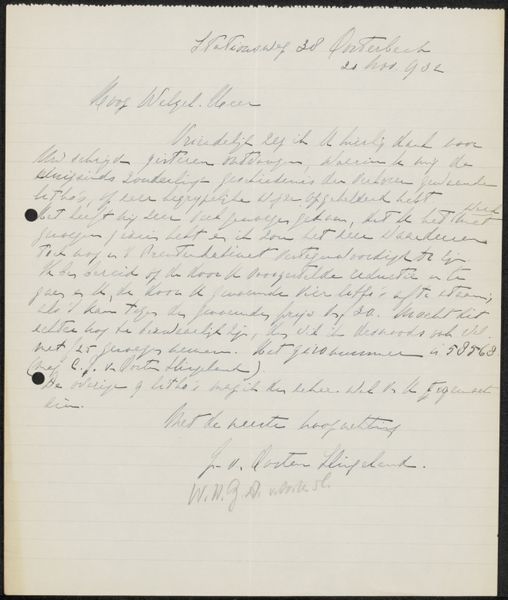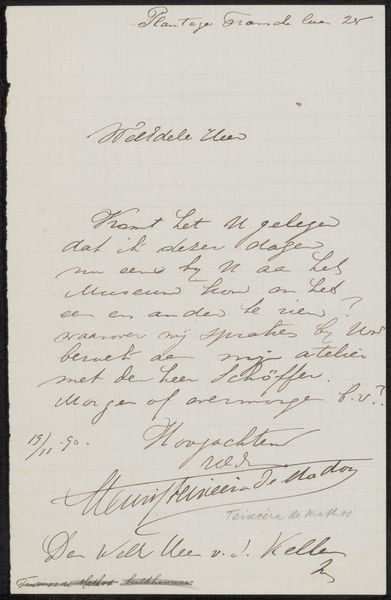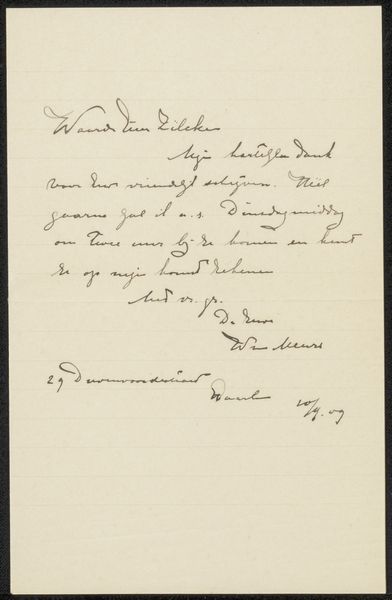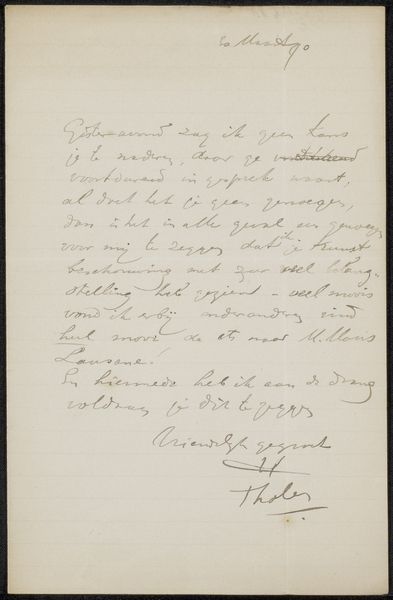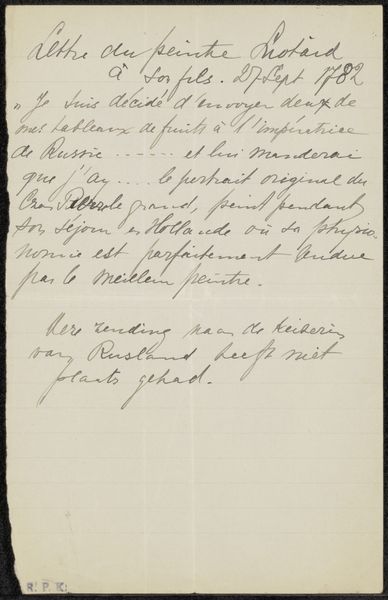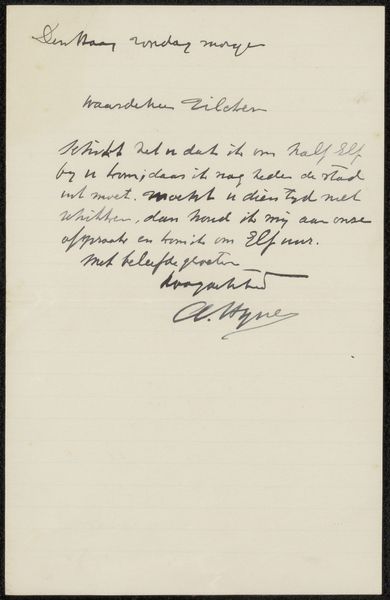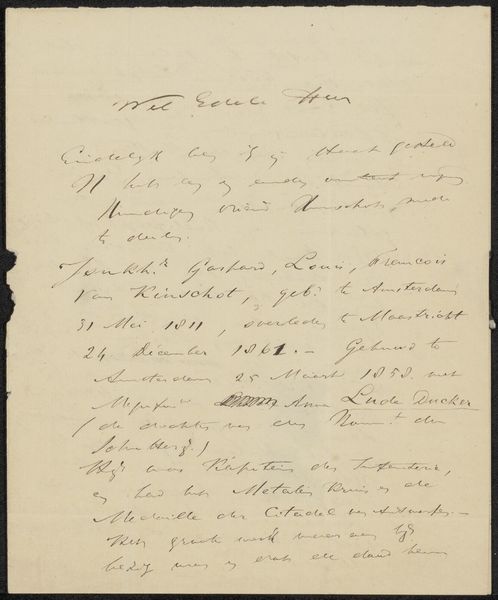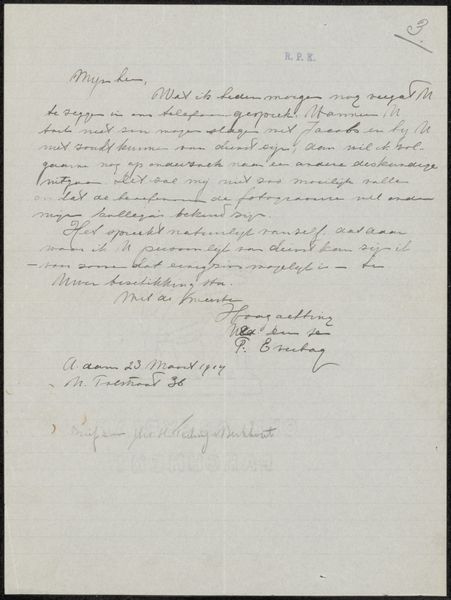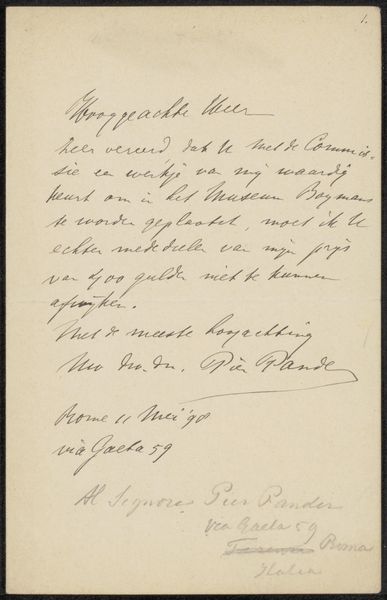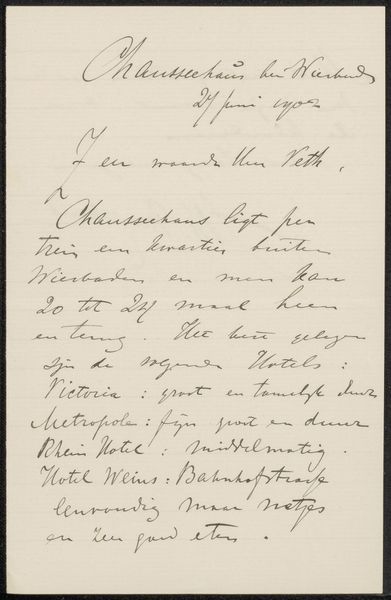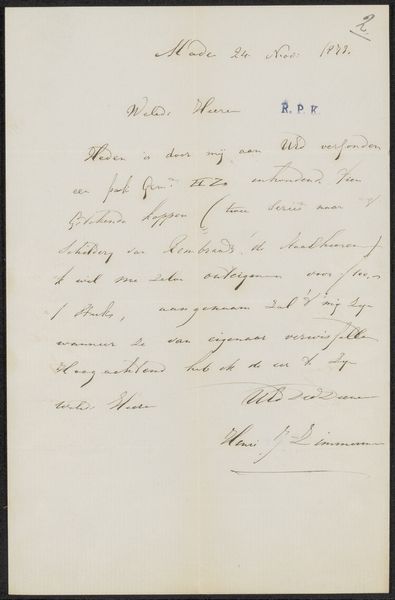
drawing, paper, ink, pen
#
portrait
#
drawing
#
paper
#
ink
#
pen
Copyright: Rijks Museum: Open Domain
Editor: Here we have Maurits van der Valk's "Brief aan Jan Veth," created sometime between 1874 and 1925. It's a drawing, a letter really, in pen and ink on paper. It seems quite personal, almost fragile. What's your interpretation of this piece? Curator: What I find fascinating here is the power dynamic inherent in written correspondence. This wasn't simply a means of conveying information; it was an assertion of power and status. The very act of writing, the control over language, suggests an inherent privilege. Consider who had access to literacy at the time and what that signifies about their position in society. What social constructs might be illuminated by further analysis? Editor: That's an interesting perspective. I hadn't really considered it in terms of power. I was more focused on the intimacy of a handwritten note versus, say, a typed letter or an email today. Curator: Exactly. That supposed intimacy also merits scrutiny. How is it deployed and what does it reveal about the carefully constructed performance of self? Who is authorized to express it and to whom? The social rituals of letter writing, shaped by historical power imbalances, dictate who can address whom in a certain way, or expect particular replies. It’s crucial to view this letter as existing within a system of social norms. Editor: So, you're suggesting that even a seemingly intimate letter can reveal broader societal structures and inequalities? Curator: Precisely. This "Brief aan Jan Veth," on a simple sheet of paper, invites a deeper reflection on privilege and identity in art history. Editor: That gives me a lot to think about – I'll never look at handwritten letters the same way again.
Comments
No comments
Be the first to comment and join the conversation on the ultimate creative platform.

